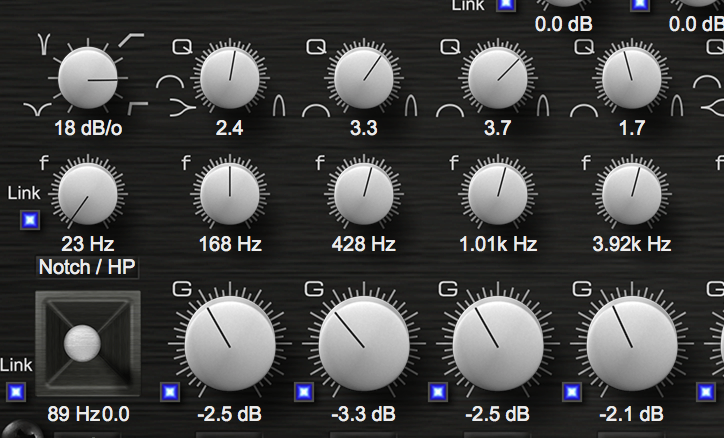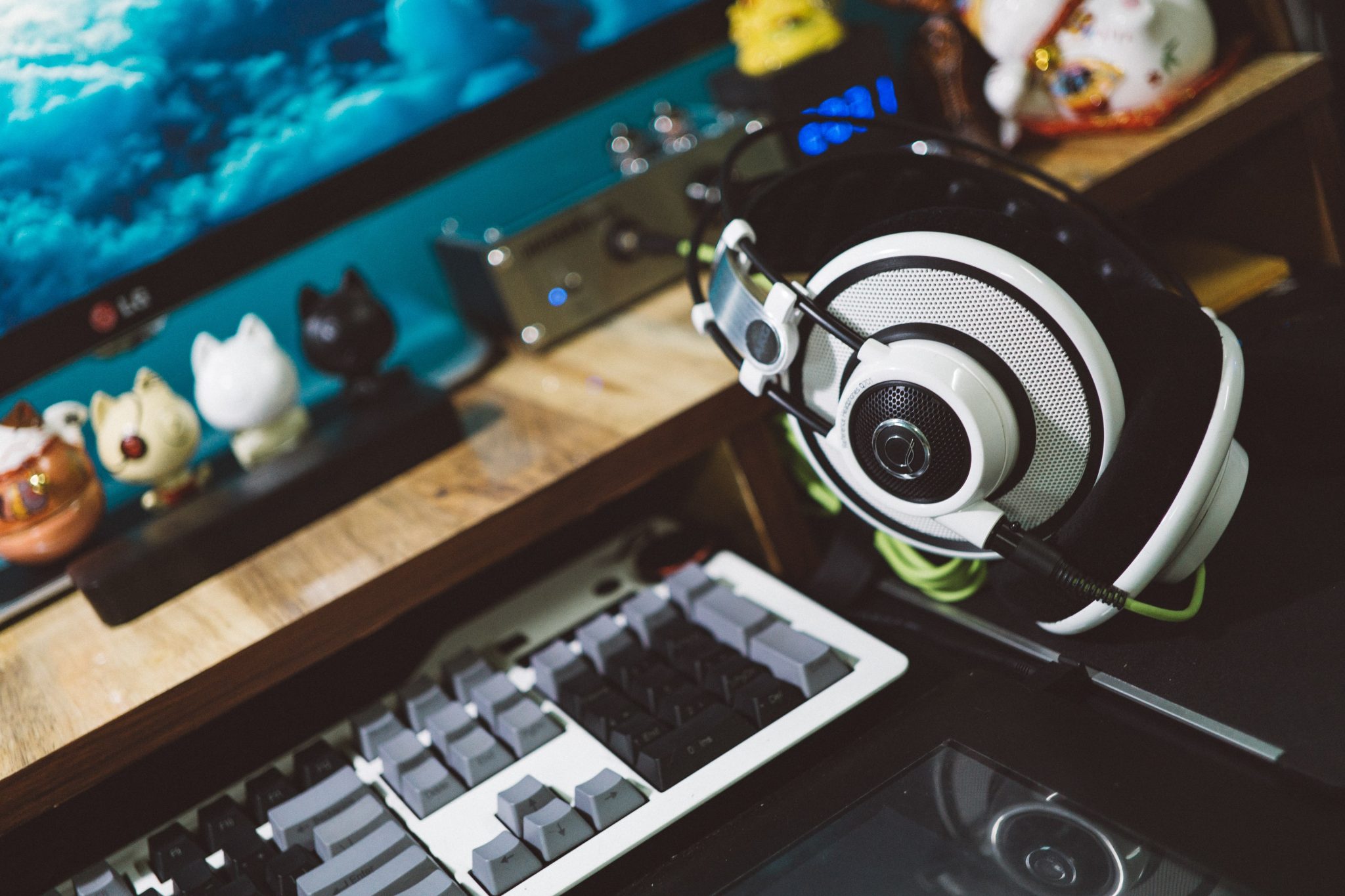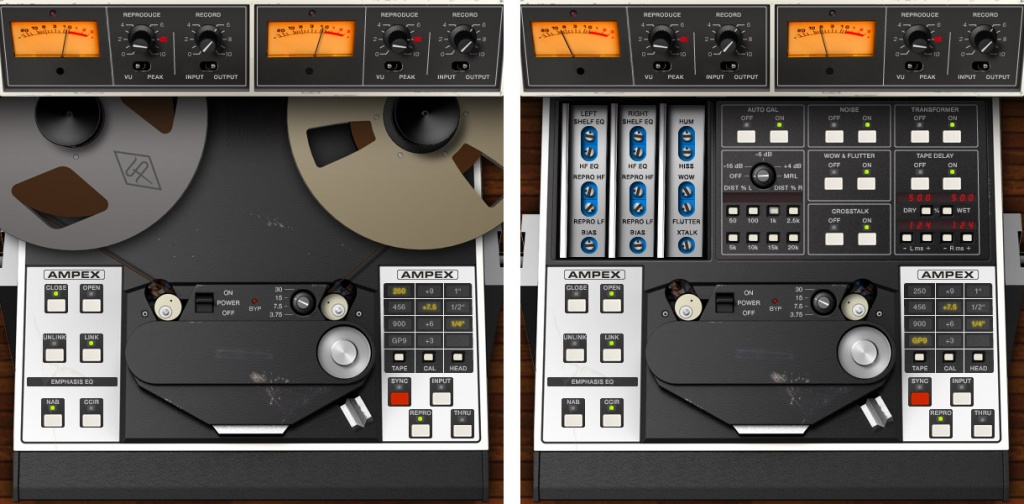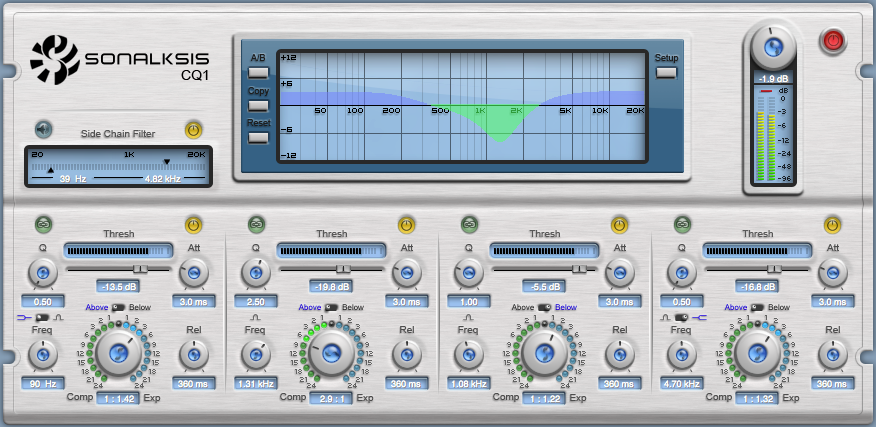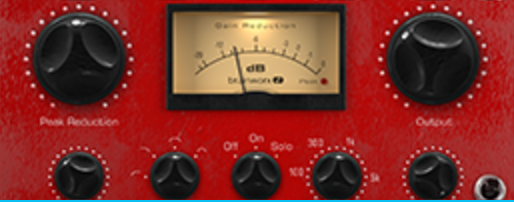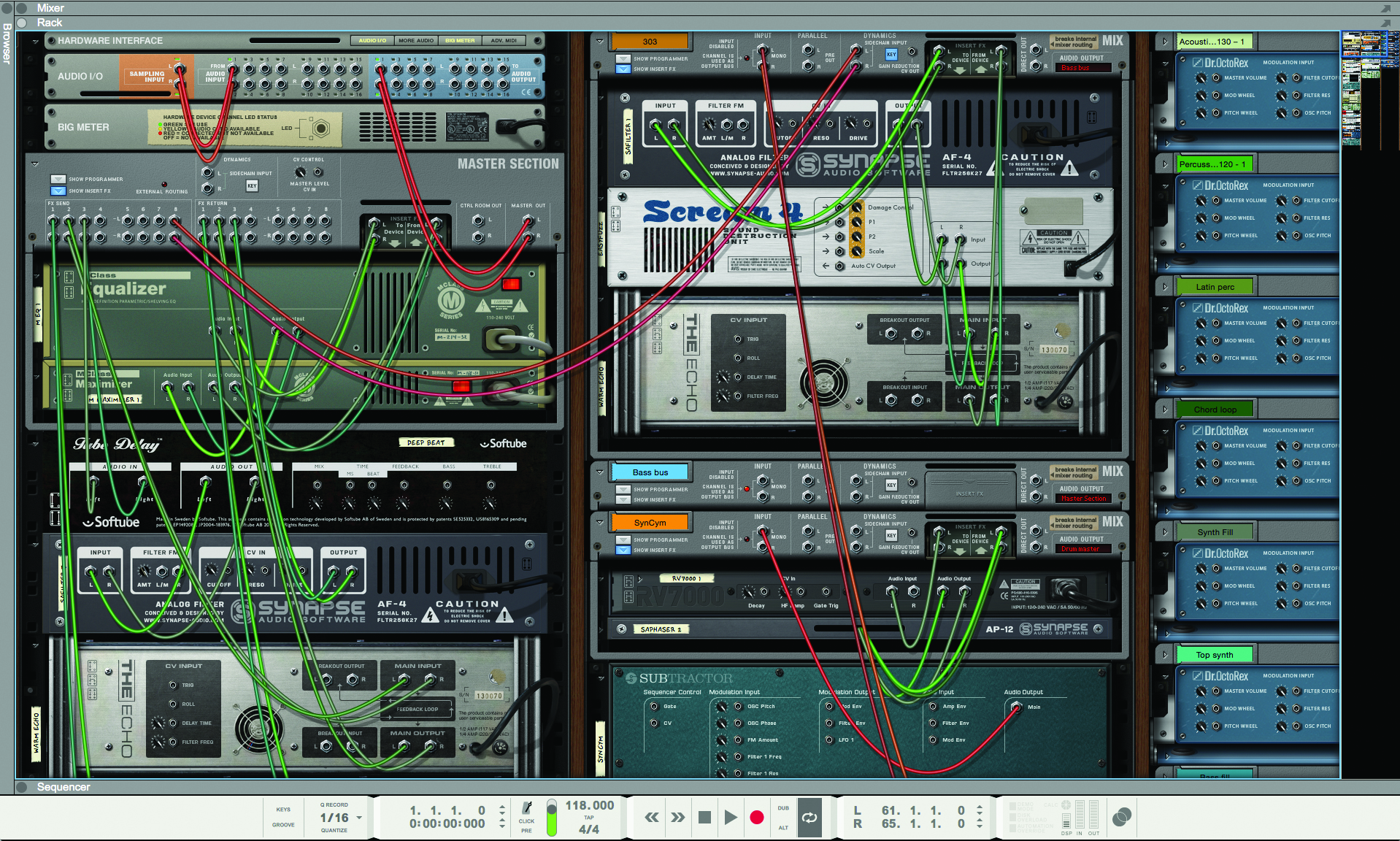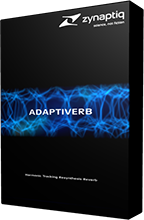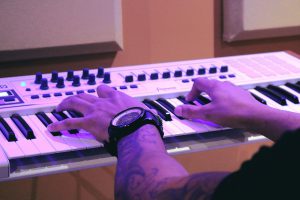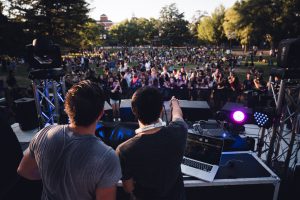Guide To Templates
Some links will provide a commission to maintain this blog free, so consider supporting this way. I have not been requested to make this blog and all suggestions are based on what I use for my work.
I’ve recently finished an album. The tracklist has 19 tracks, which means I had about 40 songs and discarded half of them. For some, this feels like much, but when I work on an album, there’s a point where the more I make songs, the more new potential ideas emerge. This motion feels like a force where all falls in place with ease, and the efforts become less intense.
But there’s a secret weapon that makes it all easier and fun. Well, a few tricks come together when I work on multiple tracks at once because, speeding through the ideas, I have to save macros that fix an issue; the same goes for presets and eventually, I create templates where I can pick up tools.
I thought I’d write a post about templates. People overlook this tool and don’t see the point of exploring it. It deserves some attention because it could bring you speed and efficiency.
Productivity, Speed and Organization in Creation
I’m not sure where I read this, but this person said something like:
“I don’t believe in efficiency while creating because it is normal to be messy, lost. and chaotic; it is the core of troubleshooting, which is what creativity is about.”
While I understand and relate to it, I also see the benefits of having some tricks when working on more significant projects, whether mine or a client’s. There are things in art where your intuition will guide you to make decisions, and that will get you to take steps towards zones that aren’t controllable. However, regarding electronic music, we have multiple steps towards the end of the projects, and some are purely technical. Frequently, I get clients who come to me because they’re on the verge of giving up. Once you go through the multiple layers of everything to be handled, you get to overhear your music and, perhaps, start changing things that were working in the first place. This is why if you can use some tricks, tools and organization, you’ll cut out some time from the wrapping part.
That said, you can have the best of both worlds: You want to remain intuitive and explorative, but you want to achieve results rapidly when it is time to conclude.
Being organized solves multiple issues, such as:
- Time saving. One challenge electronic musicians face is digital hoarding, which means they constantly get free or bought plugins, tools, and macros more than they use them. This results in having more options than one can easily integrate into a solid workflow. Organizing this will give you quick decision-making.
- Better understanding of technical needs. Having templates helps you separate your workflow into modules, where you will already know what tasks to do next.
- More energy. A challenge that new electronic musicians face is mental exhaustion from exploring music. This is partly due to decision fatigue. The more you have to make decisions, the more you’ll feel exhausted quickly.
- Effective validation process. When you have a process that is also a checklist of all the elements you need to decide if your song is done, you will rely less on others to know if you’re finished.
Regarding templates, if I look at what I do, I have multiple templates categorized according to the tasks and needs. There are also various ways to use them, which I will cover. Let’s go through the categories and how they can be done and review the tools I use regularly.
One Template Per Need
The point of making a template is to turn something that worked into a tool you can reuse. If you think of any tool you have, such as a stove, hammer, drill, or MIDI controller, they are all the results of people having to solve an issue they wanted to address and turn it into something that can be used repeatedly. Using someone else’s template could be a shortcut for your workflow but it’s essential to keep in mind that it was made from someone else’s trial and failures. I believe it’s essential that you develop your templates so you can learn and tweak tools to your needs. Other people’s needs will never be precisely adapted to what you do.
I want to share some template ideas and tips for turning your work into future shortcuts. My work approach involves multiple phases, so I have made my templates based on that to avoid having to redo the same repetitive tasks.
Default Template
The Default template in Ableton is where your day starts. It’s helpful to have a few things ready, so you don’t have to prepare your environment each time you open your DAW. There are a few things I want to set up my Master/Main channel, the default audio and midi channels, and organize your sidebar properly to avoid searching.
Master/Main Channel:
- EQ: Handling garbage low frequencies means you want to have a high pass at 20Hz. You can leave it with a smooth curve, but if you do this, you’re already solving many issues beginners have with their mixes. I would suggest not doing many changes and keeping it flat but if you have tendencies to compensate for your listening environment, you could do a default EQ to fix that problem. Compensating implies that your listening environment might be badly treated with acoustic padding, making you push or cut frequencies that don’t need changes. People who don’t have a sub in their studio tend to push the lows too much or completely miss it.
- Utility: This simple stock plugin is probably the most useful of all your plugins. Having one on the main channel lets you sum your low end to mono, which fixes most phasing issues and solidifies the mess that stereo low end can create. Some songs have a stereo low end, but this is not something I would encourage newcomers to explore. The width is also a good way to balance your mono versus stereo ratio. Then, the gain allows you to compensate for too much or too little volume coming in.
- Limiter: When we make music, we might lose track of the main channel, and the signal might overflow. The limiter is your friend to control that. It’s that policing tool that can also scrap a mix if you leave it as is when exporting.
- Metering: While experienced musicians tell others to use their ears to know what’s wrong, I still rely on visual representation of what I do to validate what’s happening quickly. Working on a mix for a while, you will lose sense of flatness in the frequency distribution. You can look at a visualizer to see what’s happening.
While stock plugins will do for a while, you can get some third-party plugins, some for free.
The King of Metering is free and offered by Voxengo as SPAN. It covers everything you need to understand what’s happening. Make sure to configure it properly using Dan’s tutorial. I also love T-Rack Meter. It is visually appealing and has a waterfall/spectrogram analyzer. You can also use this one for free if you want to add it.
For Utility, you can also look into other plugins, such as Track control by DMG and Melda’s own MUtility. Both are free.
For Limiters, the one in Ableton got a lovely upgrade with v12 and is now very powerful. You can achieve solid results with it. If you’re looking for something with a bit more bells and whistles, you could check Smart Limit, which is not too expensive, versatile and easy to use.
Send/Returns
I’m always baffled by how people don’t use return channels that much, but they’re efficient in many ways. One of those is global effects, which means you can route multiple channels towards them and have a more coherent result. It also saves CPU. I believe the default ones in Ableton are a reverb and a delay. Those 2 effects are common in electronic music production and other genres, so it makes sense. The stock plugins usually do the trick; you don’t need much more. But there are an extra 2 return channels I would encourage you to add:
- Stereo/Sides: You may add a utility plugin sent to be in Sides Mode only on this channel. I’d pair that with the EQ and set it in Mid/Side mode.
- Mono sum: This would be the opposite of the previous one. This means you put a utility plugin in mono mode.
Why do this?
Some sounds might need to be sent towards the stereo return to increase presence in that zone. You can also add “side” effects, where the effects will only affect the side part of the channels routed there. The mono channel is in the same logic, but this one is focused on the mono signal. Many clients focus on getting width for their music and forget the importance of the mono signal, which is critical to impact multiple contexts (e.g. phone, car sound system, headphones, etc.). If you use premade loops, there may be some imbalance between the stereo and mono. Using sends is a fun way to control that because once you have multiple channels routed there, you can adjust the entire track simultaneously.
Default Audio
Some plugins can be added automatically each time you open an audio channel. This saves some time, but if you add many, it will hog your CPU drastically. In theory, you don’t need much but if you think of general needs to its bare minimum, I would recommend adding the Channel EQ as well a Utility. These will let you control the tone of your signal and its input gain and stereo adjustment. If your CPU can handle a bit more, I would also suggest a few:
- ConsoleX8056: This suite is badass. It’s an analog emulation suite with a console emulation, vintage EQ and compressor, and a coloured gain staging utility. When mixing, I’ve been ditching my pricy Universal Audio VSTs for these. Using the console on all your channels will bring some non-linearity to your mix, blurring the lines of a digital signal. The Gain unit is not transparent; you’ll get some crunch if you push it.
- Envelope Follower: This is undoubtedly my favourite tool in Ableton. It will read the amplitude envelope of your incoming signal, allowing you to control the channel’s parameters or any other channel, which opens the door for creative sidechaining.
- EQ8: The advanced EQ in Ableton with more filters than the channel EQ.
- Compressor: If you want to control the density of your incoming signal.
- Channel strip: If you want to turn your channels into an analog console with a similar look and feel, these aren’t available in Ableton. My favourite option is to turn to Brainworx with their numerous emulation of legendary consoles. I have a preference for the Neve (AMEK)‘s sound, and therefore, the 9099 is my default option.

Default MIDI
This one comes with a few options that I would recommend.
- Scale: You want your midi signal to have the option to follow the global key/scale of the project, so scale allows you to handle that easily.
- Expression Control: This tool intercepts the signal’s characteristics (Velocity, aftertouch, slide, etc.) and can map them to the parameters of the synth in the channel or something else in the project.
- Velocity: Useful for tweaking the velocity to taste, including randomization and midi compression.
- Note Lenght: Allowing you to tweak the length of your incoming notes
- MFA S&H Pro: Reading the incoming notes will generate random information, which helps modify your instrument in the channel. This pro version of a simple S&H is very powerful in the numerous options to control the random signal.
- Chance Engine: This allows you to add probability to the notes with the option to modify the notes. It’s convenient when you want to deconstruct a repetitive melody.

Sidebar
Organizing your sidebar will speed up your searches. You can use the colours to tag anything and have quick access. Mine has been a bit of a mess until I discovered a new feature on Ableton v12. You can now add custom folders on your sidebar with any content you have, but it will be essential to tag your plugins properly. To add a custom folder, you need to search and then click on the “+” to add that search as a dynamic folder. If you made a side folder for compressors, the folder will be automatically updated each time you add a new compressor to your library.


R&D Template
I have a template dedicated to research and development (ideas, theories, concepts, tutorial exploration, etc.). This template aims to have quick tools to test whatever is on my mind. The way my mind works is perhaps similar to other people’s. I often have an idea of a sound based on something I heard in a song playing (maybe I’m driving or walking and not in my studio), and then I reverse-engineer what it could be. Being on the Mac ecosystem, I either use Notes or Voice Memos to write down what I have in mind and then I will try ideas in the studio later on.
Here are some ideas for an Ableton template dedicated to research and development. You could start with the default template and then build this one since some needs overlap.
Signal Analysis & Visualization
The first channel would be for sound inspection, and the second for testing. Therefore, these analysis tools are needed for both channels.
Visual feedback is key since the goal is to deconstruct and understand sounds.
- Spectrogram & Frequency Analyzer → To see how harmonics evolve, check the previous link to the free Spectrogram and SPAN. I also love Fabfilter ProQ4, which has a beautiful Frequency Analyzer. One thing I like about this EQ is the matching EQ option, which will be useful for understanding the frequency shape.
- Oscilloscope → To analyze waveform shapes. I love using the one in Shaperbox because it can pair with some signal modification tools. Otherwise, Melda has a free tool that can be helpful.
- Envelope Follower → To extract dynamics from a reference sound and apply them elsewhere. I’d use the one in Ableton.
- Peak & RMS Meter → To monitor amplitude behaviour. SPAN can convert this.
I would drop Shaperbox on both channels to modify and analyze. That alone will be very useful.
Sound Deconstruction Track
The third track will be about making tests from a song.
- Reference Track → Load in the sound you want to analyze.
- Sampler & EQ Matching Track → Use an EQ Match or Sampler to isolate key frequencies.
- Transient Isolation Track → Use gates or transient designers to extract attack portions. While you can do a fair job with Ableton’s gate plugin, my favourite gate comes from Oxford Drum Gate.
- Sustain Analysis Track → Loop specific sections to analyze their behavior.
Reverse-Engineering Tools
This channel will explore some sounds from your reference or sound to analyze. This one is optional and not necessarily one to use de facto. Instead, you could prepare this as a series of macros you import when needed.
- Granular Sampler Rack → A Simpler/Sampler preset pre-loaded for quick granulation. The Granulator III is pretty impressive for exploring.
- Resonator Bank → A rack with multiple resonators (Corpus, Collision, EQ) to extract tonal characteristics. Again, you can see notes from what you hear using Pro-Q4 paired with a stereoscope.
- Modulation Extractor → A chain with an LFO, Envelope Follower, and Sidechain Compressor to mimic movement in the reference sound.
Synthesis & Rebuilding Section
This channel is also optional but comes in handy.
- Oscillator Matching → A synth (like Operator or Wavetable) to manually match the tonal structure.
- Noise & Texture Layering → A track that adds noise, static, or other micro-details. Melda has a noise generator that is free and very useful.
- Dynamic Modulation Rack → LFO + Envelope tools to reconstruct movement.
- Harmonic Enhancer → Using Saturators, Waveshapers, or FM techniques to match reference overtones.
Possible Enhancements
- Randomization Macros → To introduce variations while testing.
- MIDI Note Extractor → A MIDI effect chain that converts audio to MIDI for better tonal deconstruction.
- Spectral Freezer → A track that can “freeze” spectral snapshots for close inspection.
Song Structure Template
These templates are from a different mindset, and they’ve been explored in my blog numerous times, but it comes down to deconstructing a song you love for its arrangements. This implies dragging the song in Ableton’s arranger side, matching the tempo to the project, and then looking at the waveform.
- Listen to the song and pay attention to all the sounds.
- Add a MIDI channel per sound that you can hear. For example, one channel named Kick, one bass, clap, synth, etc. These ghost midi channels don’t have any instruments loaded and are there as references alone.
- Once you have listened to the song and noted all sounds with a MIDI channel, you listen again and add MIDI clips to the timeline when you hear the sound coming in.
- By the end, you should have the song’s structure in MIDI clips, indicating the order of all sound appearances.
- You can go beyond by putting midi notes in the clips to see when the sounds appear precisely.
- Group the reference with the midi channels, then drag and drop it in your sidebar within a folder for your structures.

This can be saved as a template for later use. Once you have a solid loop and want to turn it into a song, you could import a structure you previously made and know works. This can validate a structure and the number of sounds you need to complete a song. Some people can never pinpoint whether they have enough or too many sounds.
Mixing Template
While I offer a mixing template here for you to check, I can explain how to create one.
The logic of a mixing template is to rely on groups you can import into an ongoing project. Then, you can drag your project channels into the imported group. I would do a group per family of sounds:
- Kick (on its own): I’ve been enjoying Cableguys’ new tool for percussion. Pair it with Shaperbox, and you will have your compression, transient shaper, and overall volume adjustment tools all in one.
- Low End: Bass or whatever bleeds under 100hz. An EQ like Pro-Q4 or TrackSpacer will do for clean ducking, but you could also use a simple stock EQ from your DAW.
- Percussion: Percussion potentially needs a bunch of tools, but Neutron will cover that for you. Tools that are useful here are an EQ, Gate, Transient shaper, Compression for glueing and some saturation.
- Melodic elements: This one is tricky because it could combine synth stabs and more extended notes like pads. Some compression can help glue them together gently, and I love using a leveller for that. The LA-3A is perfect for that. EQing and stereo control are going to be essential. Please don’t overdo it with the width enhancements.
- Background: This is low in presence. Compression and EQing, as well as the track spacer, are useful here once more for clean results.
- Vocals: This is a tricky one, but I would say the LA-3A is going to be your best friend and a vocal rider like Melda. Pair this with your favourite reverb, delay, and chorus for cosmetics.
I hope these were useful!

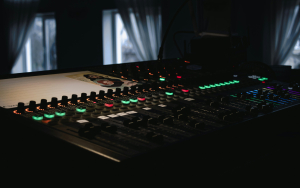

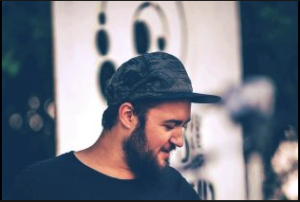

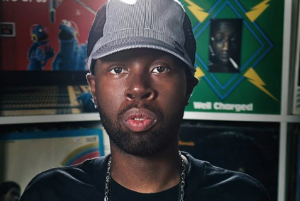
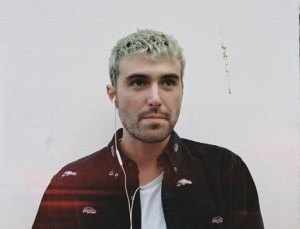
 the old words and make them new again.
the old words and make them new again. Take your readers on a journey.
Take your readers on a journey.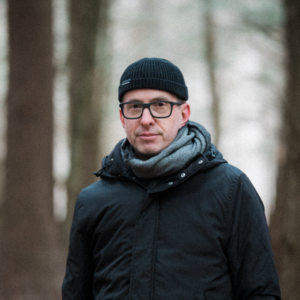 One thing that I love doing is to work with unestablished artists. It’s why I have
One thing that I love doing is to work with unestablished artists. It’s why I have  Not all genres are the same, and they require different equipment. If you were to record a cowboy outlaw record, it’s probably not the best idea to go to a micro house producer. However, I have had rock bands come to me because they wanted their album to sound electronic in nature, despite it being a rock album.
Not all genres are the same, and they require different equipment. If you were to record a cowboy outlaw record, it’s probably not the best idea to go to a micro house producer. However, I have had rock bands come to me because they wanted their album to sound electronic in nature, despite it being a rock album.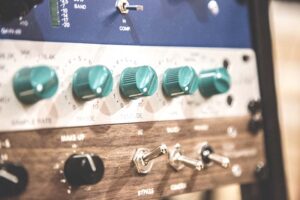 Perception is reality, and some people have different perceptions on what things are supposed to be. Especially when dealing with their art. With audio, producers often get married to their sounds, thinking that they should be specifically in this spot in the mix, when, in reality, it probably won’t translate the way you want it to. This may come from hearing said sound over and over again in whatever room, or on whatever medium they were listening to while they were making it. However, in a well treated room, with calibrated equipment, or conversely, in a club with a good, or poor sound system, it may not translate exactly how you anticipate. Some people are more judicious about this, and accept the reality. However, some you just can’t please. So is the way of the artist.
Perception is reality, and some people have different perceptions on what things are supposed to be. Especially when dealing with their art. With audio, producers often get married to their sounds, thinking that they should be specifically in this spot in the mix, when, in reality, it probably won’t translate the way you want it to. This may come from hearing said sound over and over again in whatever room, or on whatever medium they were listening to while they were making it. However, in a well treated room, with calibrated equipment, or conversely, in a club with a good, or poor sound system, it may not translate exactly how you anticipate. Some people are more judicious about this, and accept the reality. However, some you just can’t please. So is the way of the artist. Engineers get that artists have a lot of things to say about their work, and may use poetic language in order to communicate it. And this prose sometimes leads to elaboration. However, there is a saying in sales, called K.I.S.S, which stands for Keep It Simple, Stupid. This is because people understand things if they are simplified. No need to get technical, or elaborate. Just say what you mean. A good way of easily communicating is to provide examples of things that already exist. Let’s be real, nothing is new under the sun, so if we can pinpoint where that idea is coming from, then maybe it can be recreated, with a flourish that makes it your own.
Engineers get that artists have a lot of things to say about their work, and may use poetic language in order to communicate it. And this prose sometimes leads to elaboration. However, there is a saying in sales, called K.I.S.S, which stands for Keep It Simple, Stupid. This is because people understand things if they are simplified. No need to get technical, or elaborate. Just say what you mean. A good way of easily communicating is to provide examples of things that already exist. Let’s be real, nothing is new under the sun, so if we can pinpoint where that idea is coming from, then maybe it can be recreated, with a flourish that makes it your own.
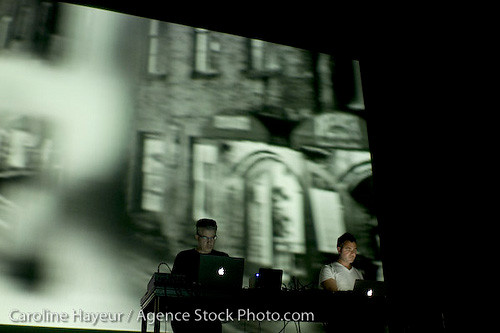
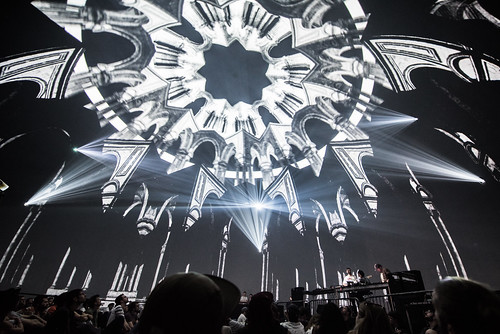
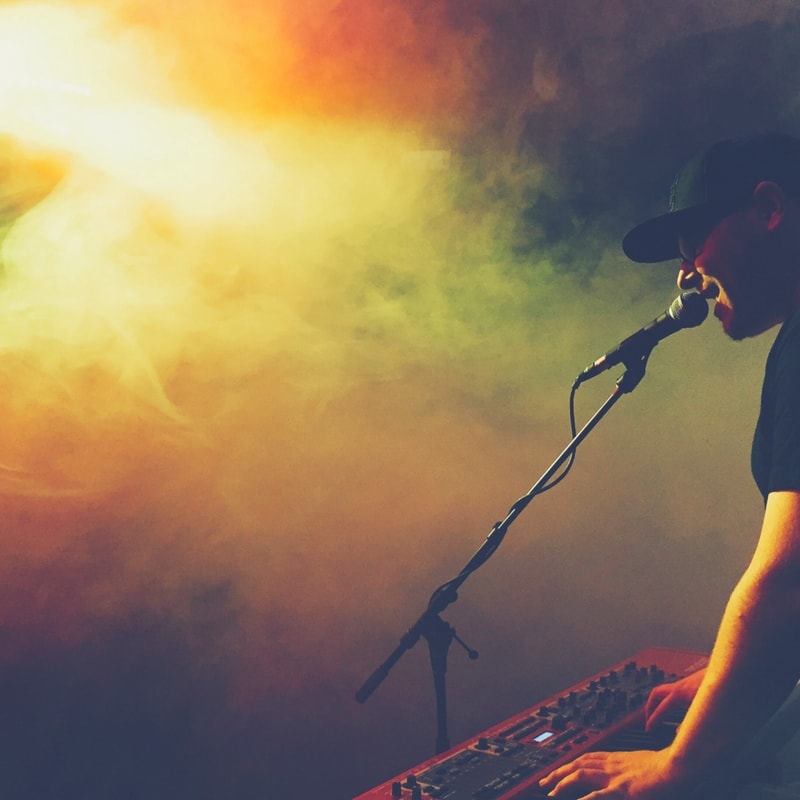 In a sense, musical intuition is what defines someone who can bring a bit of creative magic into something, in comparison to someone who sticks to truly technical application of software. I’ve often had the chance to watch experienced producers make music, either while I was visiting one’s studio or on the spur of the moment of a jam. For instance, we once had the infamous Narod Niki experience at Montreal’s MUTEK in the early 2000’s where Zip, Villalobos, Dan Bell, Akufen, Cabanne, Dandy Jack, Monolake (even Cassy sang for some minutes) all synced their laptop and gear to improvise a show for us. Our local festival gave us many opportunities to watch, what I would call, masters in what they do, play in front of a crowd to present how to create and perform. The live act itself, when done properly, should sort of represent what the artist is doing in his or her studio, but in a way that can bring the crowd on a journey.
In a sense, musical intuition is what defines someone who can bring a bit of creative magic into something, in comparison to someone who sticks to truly technical application of software. I’ve often had the chance to watch experienced producers make music, either while I was visiting one’s studio or on the spur of the moment of a jam. For instance, we once had the infamous Narod Niki experience at Montreal’s MUTEK in the early 2000’s where Zip, Villalobos, Dan Bell, Akufen, Cabanne, Dandy Jack, Monolake (even Cassy sang for some minutes) all synced their laptop and gear to improvise a show for us. Our local festival gave us many opportunities to watch, what I would call, masters in what they do, play in front of a crowd to present how to create and perform. The live act itself, when done properly, should sort of represent what the artist is doing in his or her studio, but in a way that can bring the crowd on a journey. A notable example would be an artist, during a live show, dropping some sounds or a musical idea that was unexpected but works with what’s happening at the current moment completely. Another example could be a musician proposing a random idea and having that incomprehensible idea make total sense after 2-3 minutes or development.
A notable example would be an artist, during a live show, dropping some sounds or a musical idea that was unexpected but works with what’s happening at the current moment completely. Another example could be a musician proposing a random idea and having that incomprehensible idea make total sense after 2-3 minutes or development.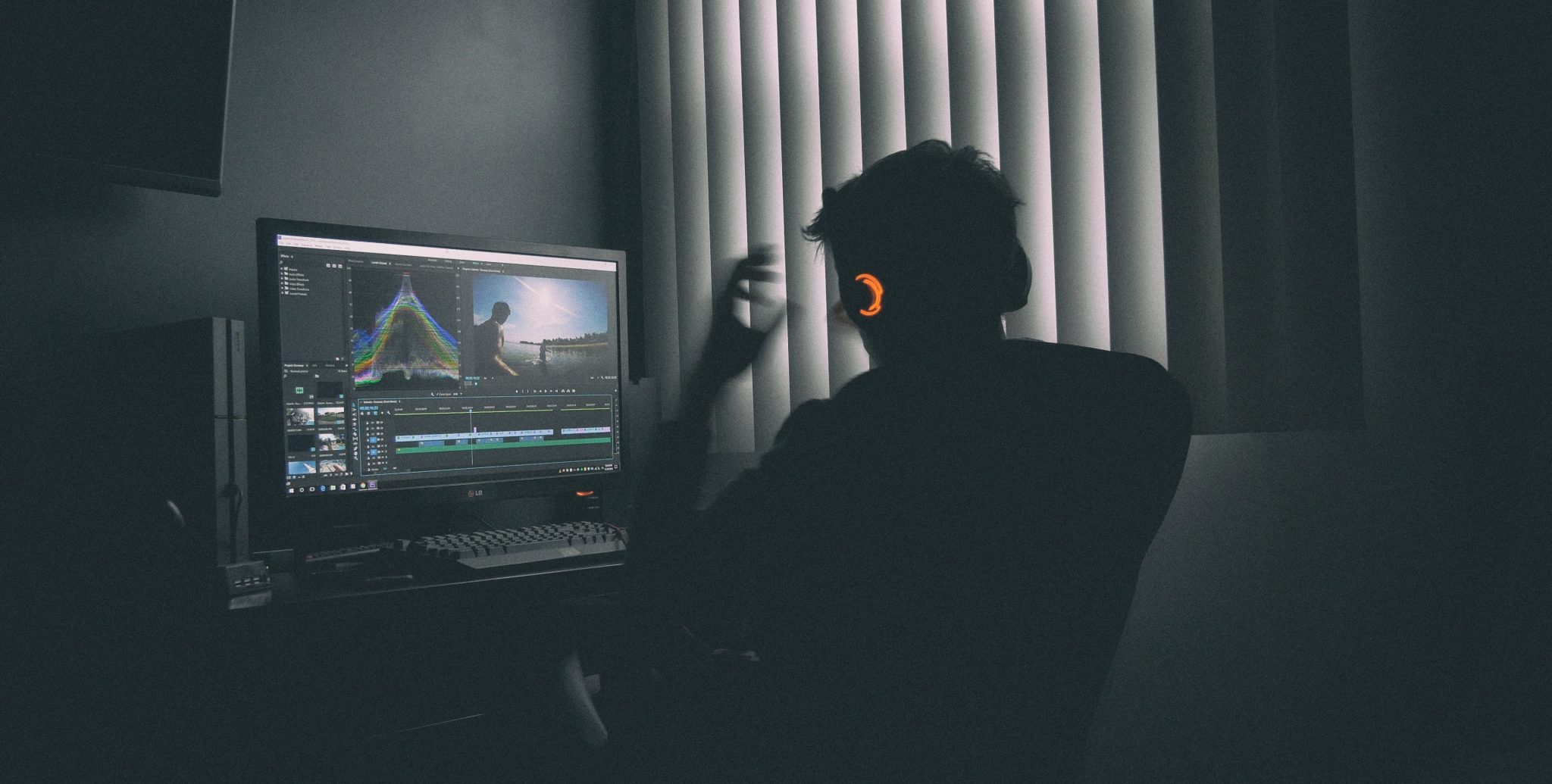 The path doesn’t need to be cleared from obstacles. Obstacles are the path. (Buddhist Proverb)
The path doesn’t need to be cleared from obstacles. Obstacles are the path. (Buddhist Proverb)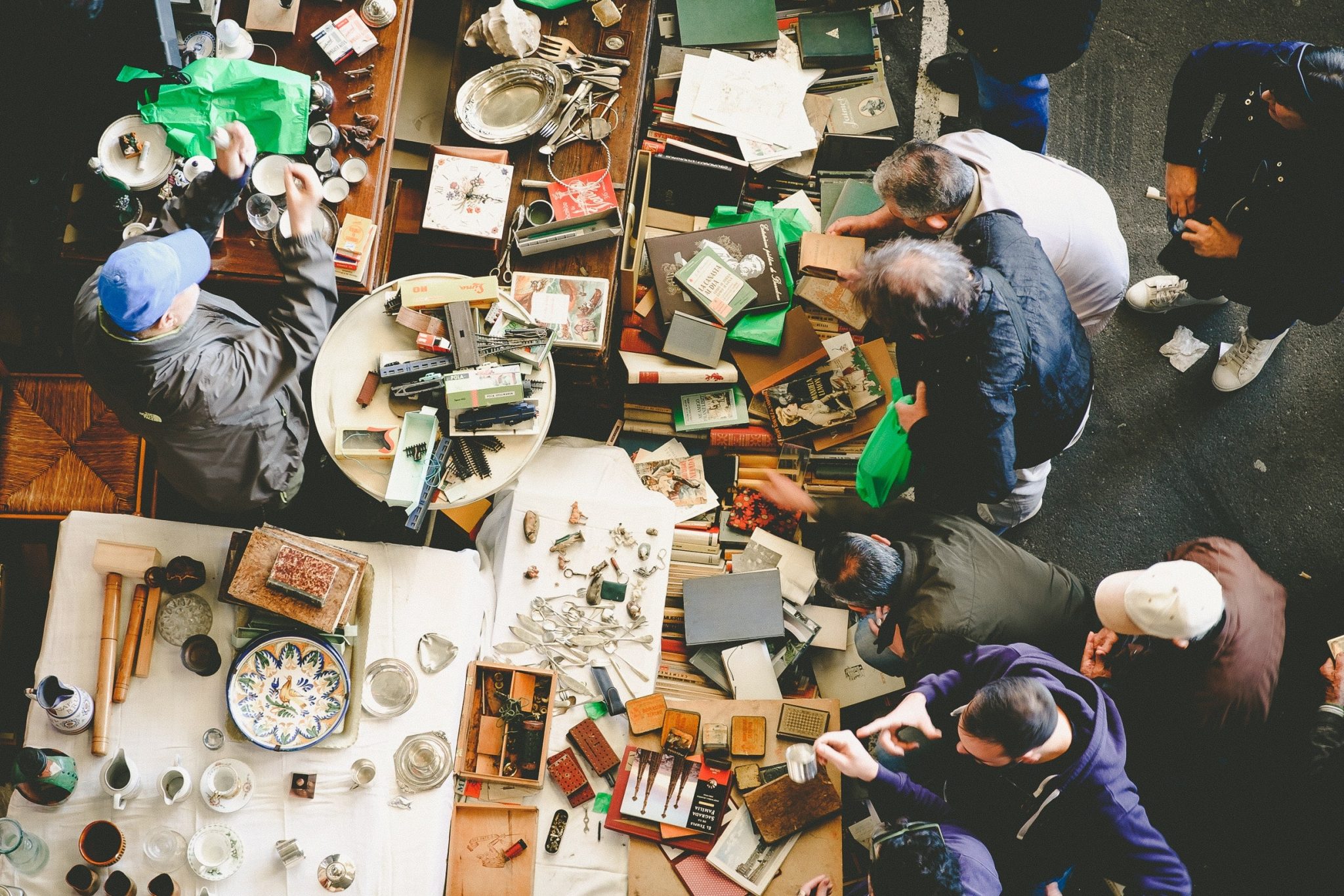 Going back to the article
Going back to the article
